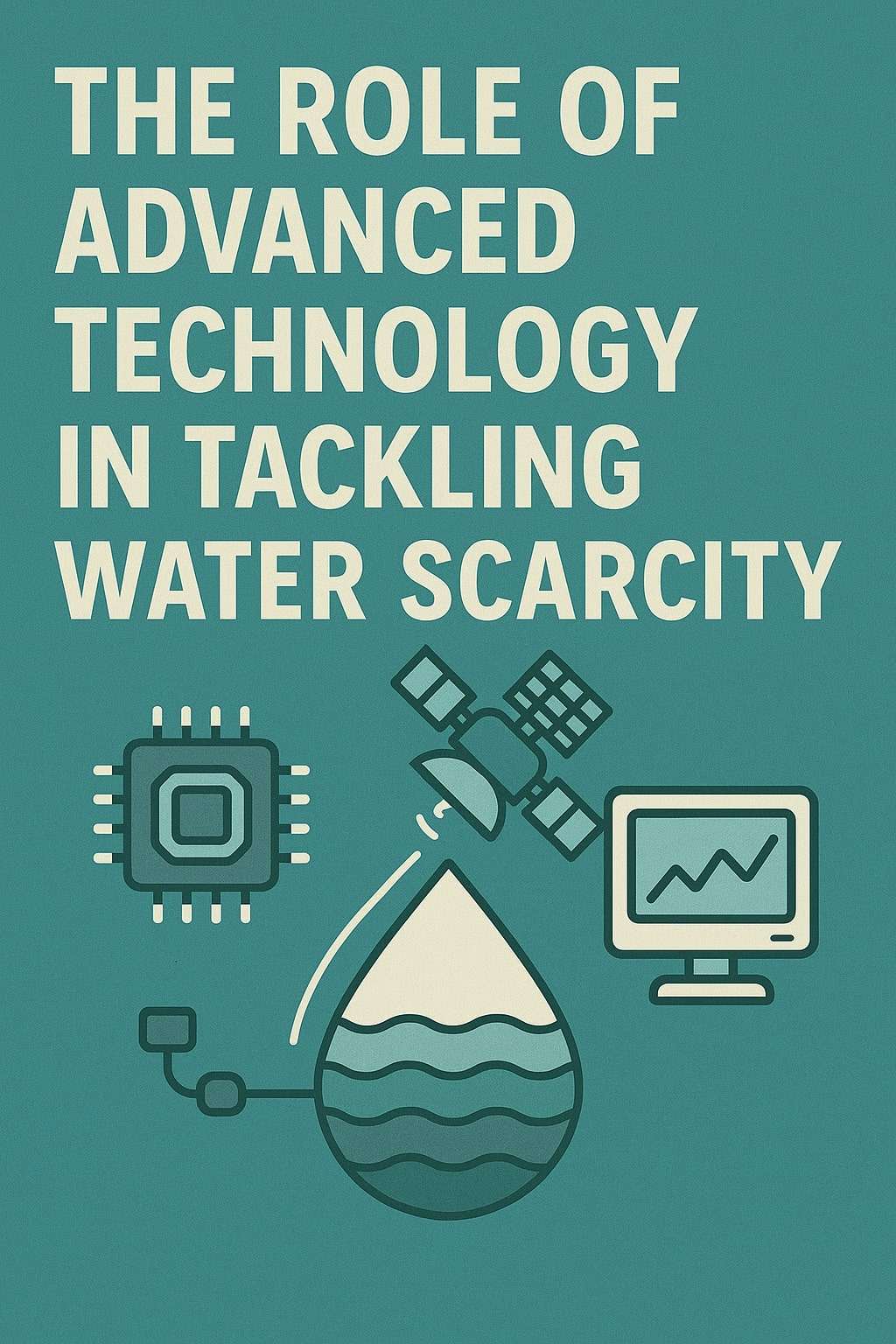Featured Articles
As urban populations continue to grow, the challenge of managing wastewater sustainably becomes increasingly critical. Cities generate vast quantities of wastewater daily, and improper handling not only pollutes the environment but also threatens public health. Here, we explore strategies to transform wastewater management into a sustainable, circular process. 1. Embrace Decentralized Treatment Systems Decentralized wastewater treatment systems, such as community-scale treatment plants, reduce the burden on centralized facilities. These systems are highly effective in treating wastewater close to its source, minimizing transportation costs and environmental impact. 2. Focus on Wastewater Reuse and Recycling Rather than disposing of treated wastewater, cities can adopt recycling practices. Treated wastewater can be used for: Irrigation in agriculture and landscaping Industrial processes Replenishing aquifers through groundwater recharge This approach not only conserves freshwater resources but also reduces the pressure on wastewater disposal infrastructure. 3. Leverage Advanced Treatment Technologies Innovative technologies, such as membrane bioreactors (MBRs), advanced oxidation processes (AOPs), and constructed wetlands, improve the efficiency of wastewater treatment. These technologies enable the removal of harmful contaminants, ensuring the treated water meets high safety standards. 4. Promote Energy Efficiency in Treatment Plants Wastewater treatment plants are energy-intensive, but adopting energy-efficient technologies and renewable energy sources, like solar or biogas, can drastically reduce their carbon footprint. For example, biogas produced during sludge treatment can be harnessed to power the facility. 5. Implement Policies and Public Awareness Campaigns Governments and urban planners play a pivotal role in enforcing sustainable wastewater practices. Policies should encourage: Stringent regulations on industrial discharge Incentives for businesses adopting green wastewater management practicesSimultaneously, public awareness campaigns can educate citizens about the importance of proper wastewater disposal and conservation. 6. Turn Waste into Resources Sustainable wastewater management includes resource recovery, such as extracting nutrients like nitrogen and phosphorus for fertilizers. This not only reduces waste but also supports agricultural productivity. The Way Forward Sustainable wastewater management in urban areas is not just an environmental necessity—it’s a foundation for a healthier, more resilient future. By adopting innovative technologies, rethinking policies, and involving the community, we can transform wastewater from a problem into a valuable resource. Let’s take action today to ensure cleaner water and a greener tomorrow. Every drop matters.
READ FULLWater scarcity is one of the most pressing global challenges of our time. With growing populations, industrialization, and the impacts of climate change, the demand for clean water is outstripping supply in many parts of the world. Advanced technologies are emerging as a beacon of hope in this crisis, offering innovative solutions to optimize water use, reduce waste, and create new sources of freshwater. In this blog, we’ll explore how technology is shaping a sustainable future for water management. Understanding the Water Scarcity Crisis Water scarcity affects 2.3 billion people worldwide, according to the United Nations. It manifests in two forms: Physical scarcity: A lack of available freshwater due to geographic or climatic conditions. Economic scarcity: Inadequate infrastructure to distribute clean water, even where resources exist. Both forms of scarcity pose significant risks to agriculture, industry, ecosystems, and human health. Addressing these challenges requires a multifaceted approach, and technology is at the forefront of the solution. Advanced Technologies Reshaping Water Management 1. Desalination Technologies Desalination converts seawater into drinkable freshwater, providing an abundant and sustainable water source. Modern advancements, such as reverse osmosis and forward osmosis, have made desalination more energy-efficient and cost-effective. Case Study: Countries like Israel and Saudi Arabia are leading the way, utilizing large-scale desalination plants to meet domestic and agricultural water needs. 2. Smart Water Management Systems The Internet of Things (IoT) and artificial intelligence (AI) are revolutionizing how we monitor and manage water resources. These technologies enable real-time tracking of water quality, leaks, and usage patterns. Benefits: Reducing water wastage through early detection of leaks. Optimizing irrigation in agriculture using precise data on soil moisture and weather conditions. Monitoring industrial water consumption to ensure regulatory compliance. 3. Wastewater Treatment and Recycling Traditional wastewater treatment processes are being replaced by advanced systems that purify water to near-drinkable standards. Technologies such as membrane filtration, UV disinfection, and bio-electrochemical systems not only clean wastewater but also allow for its reuse. Impact: Treated wastewater can be reused in irrigation, industrial cooling, and even replenishing aquifers. 4. Atmospheric Water Generation (AWG) AWG technologies extract moisture from the air and condense it into potable water. These devices are particularly useful in arid regions with low groundwater availability. Future Potential: With ongoing research, AWG devices are becoming more energy-efficient and scalable. 5. Resource Recovery from Wastewater Modern wastewater treatment plants are no longer just disposal systems; they are resource recovery centers. Key Innovations: Recovery of nutrients like phosphorus and nitrogen for fertilizers. Generation of biogas from organic sludge, providing energy to power treatment facilities. Extraction of valuable materials like rare metals and salts. 6. Cloud-Based Water Resource Management Cloud computing allows centralized data management and analysis for water resources. With tools like machine learning, water utilities can predict supply-demand trends, optimize distribution networks, and prevent system failures. The Benefits of Technological Interventions Increased Water Availability: Technologies like desalination and AWG provide alternative water sources, reducing dependency on traditional supplies. Improved Efficiency: Smart systems and AI help conserve water by minimizing wastage and optimizing usage. Sustainability: Wastewater recycling and resource recovery reduce environmental pollution and create a circular economy. Cost Savings: Advanced technologies, while initially expensive, prove cost-effective in the long run by reducing waste and energy use. Challenges in Implementing Water Technologies While the promise of advanced technology is immense, challenges remain: High Initial Costs: Many technologies require significant investment, making them less accessible to low-income regions. Energy Requirements: Processes like desalination and AWG can be energy-intensive, underscoring the need for renewable energy integration. Skill Gaps: Operating and maintaining advanced systems require trained professionals, which may be lacking in some areas. A Collaborative Approach to Overcome Water Scarcity Technology alone cannot solve water scarcity. It requires: Policy Support: Governments must incentivize the adoption of innovative technologies through subsidies and regulations. Public Awareness: Educating communities about water conservation and the benefits of new technologies. Private Sector Involvement: Collaboration with industries to fund and implement scalable solutions. Looking Ahead: A Vision for Water Sustainability The integration of advanced technologies in water management is not just a response to scarcity; it’s a step toward resilience and sustainability. As these innovations become more accessible and efficient, the vision of a world where everyone has access to clean, safe water can become a reality. By embracing technology, we’re not just addressing water scarcity; we’re shaping a future where water is abundant, ecosystems thrive, and humanity flourishes in harmony with nature. Together, we can make this vision come true—one drop at a time. Water scarcity may be one of the biggest challenges of our generation, but with advanced technology and collective effort, it’s a challenge we can overcome. Let’s harness innovation to turn the tide.
READ FULLThe growing global demand for water, coupled with the environmental impact of traditional waste disposal, has sparked a revolution in water management—one that views wastewater not as a problem but as a resource. Wastewater, if managed correctly, holds immense potential for recovery, reuse, and sustainability. By adopting a circular approach, industries and communities can transform wastewater into valuable resources, ensuring environmental preservation and economic gains. The Global Wastewater Landscape Each year, billions of liters of wastewater are discharged into the environment, often untreated or underutilized. According to the UN, over 80% of wastewater generated globally is released back into ecosystems without adequate treatment. This not only contaminates freshwater sources but also wastes opportunities to recover essential nutrients, energy, and water itself. The Circular Approach: Turning Wastewater into Resources A circular approach to wastewater management involves treating and transforming wastewater into reusable resources rather than discarding it. This paradigm shift reduces environmental impact, conserves natural resources, and creates a sustainable system that benefits both people and the planet. 1. Water Reclamation and Reuse One of the most direct benefits of wastewater treatment is water reclamation. Advanced purification techniques, such as membrane filtration, reverse osmosis, and UV disinfection, enable wastewater to be treated to a standard suitable for reuse. Applications: Irrigation in agriculture. Industrial cooling processes. Groundwater recharge to combat depletion. Impact: Water reclamation reduces the strain on freshwater sources and provides a consistent supply for non-potable uses. 2. Nutrient Recovery Wastewater is rich in nutrients like nitrogen, phosphorus, and potassium, which are essential for agriculture. Technologies like anaerobic digestion and chemical precipitation can extract these nutrients for use in fertilizers. Key Benefits: Reducing the environmental impact of chemical fertilizer production. Enhancing soil health through natural nutrient cycles. 3. Energy Generation from Wastewater Organic matter in wastewater can be a source of renewable energy. Through processes like anaerobic digestion, microorganisms break down organic material to produce biogas, a clean and renewable energy source. Applications: Powering wastewater treatment plants, reducing their energy footprint. Supplementing energy needs for industries and communities. 4. Extraction of Valuable By-Products Modern technologies enable the recovery of valuable materials from wastewater, such as rare metals and salts. These materials can be reused in industrial applications, reducing reliance on virgin resources. Examples: Recovery of lithium for batteries from brine. Extraction of magnesium for use in construction materials. Technologies Driving the Transition Several innovative technologies are making wastewater resource recovery a reality: Membrane Bioreactors (MBRs): Combine biological treatment with membrane filtration for efficient wastewater treatment and reuse. Electrochemical Systems: Extract nutrients and produce clean energy simultaneously. Forward Osmosis: Uses low-energy processes to treat wastewater while recovering salts and other valuable compounds. Environmental and Economic Benefits Adopting wastewater as a resource offers both environmental and economic advantages: Environmental Impact: Reduces freshwater withdrawals and prevents over-extraction. Minimizes pollution from untreated wastewater discharge. Promotes biodiversity by maintaining healthier ecosystems. Economic Gains: Lowers operational costs for industries by reusing water and materials. Creates new revenue streams from recovered nutrients and energy. Reduces dependence on costly natural resource extraction. Challenges to Adoption While the benefits are clear, challenges remain: High Initial Costs: Advanced wastewater treatment technologies can be expensive to install. Public Perception: There is often resistance to using treated wastewater due to misconceptions about its safety. Regulatory Hurdles: Clear policies and standards are required to facilitate the widespread adoption of resource recovery systems. A Collaborative Path Forward The transition to viewing wastewater as a resource requires collaboration among governments, industries, and communities: Policy Support: Governments must incentivize wastewater recycling and recovery projects. Public Awareness: Educating people about the safety and benefits of treated wastewater can overcome resistance. Industry Innovation: Encouraging private-sector investment in wastewater technologies can accelerate adoption. A Vision for the Future The concept of wastewater as a resource aligns perfectly with the principles of a circular economy, where waste is minimized, and resources are continuously reused. By integrating advanced technologies and sustainable practices, we can create a future where: Water scarcity is alleviated through efficient reuse. Nutrients are cycled back into agriculture, supporting global food security. Energy demands are met with clean, renewable biogas from wastewater. Conclusion Harnessing wastewater as a resource is not just a technological innovation; it’s a paradigm shift in how we view our relationship with water and the environment. By turning waste into value, we can create a more sustainable, resilient world where resources are conserved, ecosystems are protected, and communities thrive. The next drop of wastewater you see might just hold the key to a greener, more sustainable future. Let’s embrace the potential of wastewater as a resource and work together to make it a cornerstone of global sustainability.
READ FULL

.png)

